Home » About Us
About Us
Islamic Services for the Deaf and Hard of Hearing (ISDHH) is a 501(c)(3) non-profit organization as well as a community that promotes and empowers Leaders for the deaf through leadership, education advocacy, determination, excellence and servitude.
ISDHH was established in 2015 as a Non-Profit organization to advocate and empower the Muslim deaf community, and facilitate their understanding of Islam and their integration within the Muslim community. Due to lack of understanding of the needs of the deaf both intellectually and spiritually, they are always excluded from the learning process including Jummah Khutbah and religious education by Muslim scholars, or even a Du’a in Ramadan which made deaf Muslims feel disenfranchised and not cared for by their brothers and sisters in faith. Due to lack of resources, deaf Muslims have minimal to no knowledge of what the Holy Qur’an contains or what the different narrations of the Prophet Muhammad (PBUH) teach us. They are very eager to learn Islam and they need and want to feel inclusive in our hearing Muslim community.
Our Accomplishments
Classes to teach American Sign Language to Muslims
National Theatre of the Deaf (NTD) performances in 2015 and 2016
ASL Interpreters for Jummah Khutba at VRIC and ICI
Meet Our Team
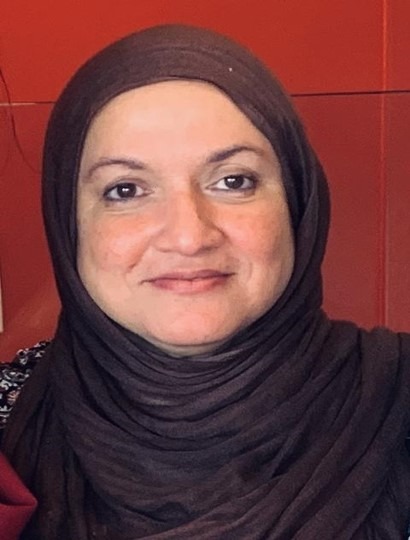
Rahma Rebecca Hossain
Khadar Omar

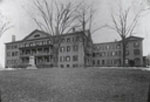


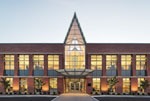
American Sign Language
American Sign Language (ASL) is the predominant sign language of deaf communities in the United States. ASL originated in the early 19th century in the American School for the Deaf (ASD) in Hartford, Connecticut, from a situation of language contact. Since then, ASL use has propagated widely via schools for the deaf and deaf community organizations. Despite its wide use, no accurate count of ASL users has been taken, though reliable estimates for American ASL users range from 250,000 to 500,000 persons, including a number of children of deaf adults.
History of American Sign Language Early in the 1800s, there were only a few thousand deaf Americans. No standard signed language existed at this time, but various signing systems were created in the deaf communities. These sign systems are now known as Old American Sign Language. The American Sign Language of today is actually related to this language.
History of American Sign Language
1814
American Sign Language
The history of American Sign Language really started in 1814 with Dr. Thomas Hopkins Gallaudet. Gallaudet was a minister from Hartford, Connecticut. His neighbor, Mason Fitch Cogswell, had a deaf daughter who was nine years old named Alice Cogswell. Dr. Gallaudet realized Alice was very smart despite the fact that she couldn’t speak or hear, and wanted to teach Alice how to communicate. Gallaudet had a little success teaching Alice reading and spelling, but he didn’t know anything about the most effective ways of educating the deaf. So, Gallaudet gained community support and enough money in order to go to Europe. Since there was a history of deaf education in Europe, Gallaudet knew he could learn the best educational methods there.
1817
American School for the Deaf
In Europe, Gallaudet met Abbe Sicard, Jean Massieu, and Laurent Clerc. Abbe Sicard was Abbe de l’Epee’s successor at the National Institute for Deaf-Mutes. Laurent Clerc and Jean Massieu were once Sicard’s students and became accomplished deaf educators. Gallaudet studied the teaching methods of these instructors and even took private lessons with Clerc, who was one of the best teachers at the institute. When Gallaudet was getting ready to travel back to America, he asked Clerc to accompany him. Clerc was one of Sicard’s best instructors and Gallaudet knew he would be a huge help in starting a deaf school in the U.S. Clerc agreed and joined Gallaudet on his journey. Gallaudet and Clerc’s school, which is now known as the American School for the Deaf (ASD), was established in Hartford, Connecticut in 1817 as the first public free deaf school in the U.S. This was a huge milestone in American Deaf history.
1863
2 American School for the Deaf
The school grew quickly and deaf students from all over the United States came together to attend this school. Just like it was at Abbe de l’Epee’s school, the students brought signs from home with them. American Sign Language stemmed from these signs as well as signs from French Sign Language that Gallaudet learned from Clerc. Gallaudet retired in 1830 and Clerc taught at the deaf school until the 1850s. By 1863, twenty-two deaf schools in the U.S. had been established. Most of them were founded by Clerc’s students. They continued to use Clerc’s deaf education methods in these schools.
1864
The First College for the Deaf
When Thomas Hopkins Gallaudet died in 1851, his youngest son Edward Miner Gallaudet continued his legacy in deaf education. Edward became a teacher at the American School for the Deaf in Hartford. Edward always wanted to establish a deaf college and in 1857, Edward was asked to be the superintendent of the Columbia Institution for the Deaf and Dumb and the Blind in Washington, D.C. Edward presented his idea for a deaf college to Congress and they passed legislation in 1864 permitting the Columbia Institute to issue college degrees.
n 1864 the Columbia Institute’s college division (the National Deaf-Mute College) opened. This was the first college for the deaf. In 1893 the college was renamed Gallaudet College to honor Thomas Hopkins Gallaudet. In 1986 the school was renamed Gallaudet University. Gallaudet University is known today for being the first and only deaf university in the world. And it’s in our very own Washington, D.C.!
American Sign Language
American Sign Language (ASL) is the predominant sign language of deaf communities in the United States. ASL originated in the early 19th century in the American School for the Deaf (ASD) in Hartford, Connecticut, from a situation of language contact. Since then, ASL use has propagated widely via schools for the deaf and deaf community organizations. Despite its wide use, no accurate count of ASL users has been taken, though reliable estimates for American ASL users range from 250,000 to 500,000 persons, including a number of children of deaf adults.
History of American Sign Language Early in the 1800s, there were only a few thousand deaf Americans. No standard signed language existed at this time, but various signing systems were created in the deaf communities. These sign systems are now known as Old American Sign Language. The American Sign Language of today is actually related to this language.
The history of American Sign Language really started in 1814 with Dr. Thomas Hopkins Gallaudet. Gallaudet was a minister from Hartford, Connecticut. His neighbor, Mason Fitch Cogswell, had a deaf daughter who was nine years old named Alice Cogswell. Dr. Gallaudet realized Alice was very smart despite the fact that she couldn’t speak or hear, and wanted to teach Alice how to communicate. Gallaudet had a little success teaching Alice reading and spelling, but he didn’t know anything about the most effective ways of educating the deaf. So, Gallaudet gained community support and enough money in order to go to Europe. Since there was a history of deaf education in Europe, Gallaudet knew he could learn the best educational methods there.
In Europe, Gallaudet met Abbe Sicard, Jean Massieu, and Laurent Clerc. Abbe Sicard was Abbe de l’Epee’s successor at the National Institute for Deaf-Mutes. Laurent Clerc and Jean Massieu were once Sicard’s students and became accomplished deaf educators. Gallaudet studied the teaching methods of these instructors and even took private lessons with Clerc, who was one of the best teachers at the institute. When Gallaudet was getting ready to travel back to America, he asked Clerc to accompany him. Clerc was one of Sicard’s best instructors and Gallaudet knew he would be a huge help in starting a deaf school in the U.S. Clerc agreed and joined Gallaudet on his journey. Gallaudet and Clerc’s school, which is now known as the American School for the Deaf (ASD), was established in Hartford, Connecticut in 1817 as the first public free deaf school in the U.S. This was a huge milestone in American Deaf history.
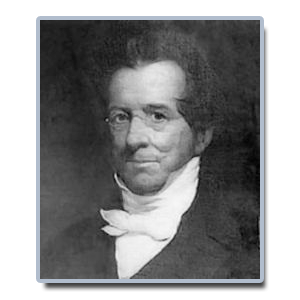
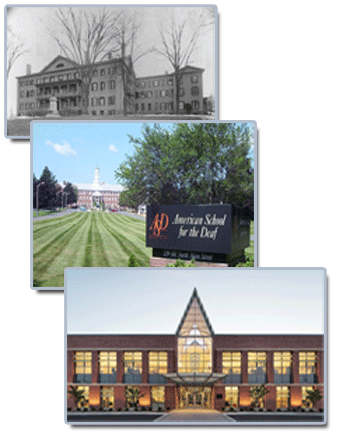
American School for the Deaf (ASD)
The school grew quickly and deaf students from all over the United States came together to attend this school. Just like it was at Abbe de l’Epee’s school, the students brought signs from home with them. American Sign Language stemmed from these signs as well as signs from French Sign Language that Gallaudet learned from Clerc. Gallaudet retired in 1830 and Clerc taught at the deaf school until the 1850s. By 1863, twenty-two deaf schools in the U.S. had been established. Most of them were founded by Clerc’s students. They continued to use Clerc’s deaf education methods in these schools.
The First College for the Deaf
When Thomas Hopkins Gallaudet died in 1851, his youngest son Edward Miner Gallaudet continued his legacy in deaf education. Edward became a teacher at the American School for the Deaf in Hartford. Edward always wanted to establish a deaf college and in 1857, Edward was asked to be the superintendent of the Columbia Institution for the Deaf and Dumb and the Blind in Washington, D.C. Edward presented his idea for a deaf college to Congress and they passed legislation in 1864 permitting the Columbia Institute to issue college degrees.
In 1864 the Columbia Institute’s college division (the National Deaf-Mute College) opened. This was the first college for the deaf. In 1893 the college was renamed Gallaudet College to honor Thomas Hopkins Gallaudet. In 1986 the school was renamed Gallaudet University. Gallaudet University is known today for being the first and only deaf university in the world. And it’s in our very own Washington, D.C.!
